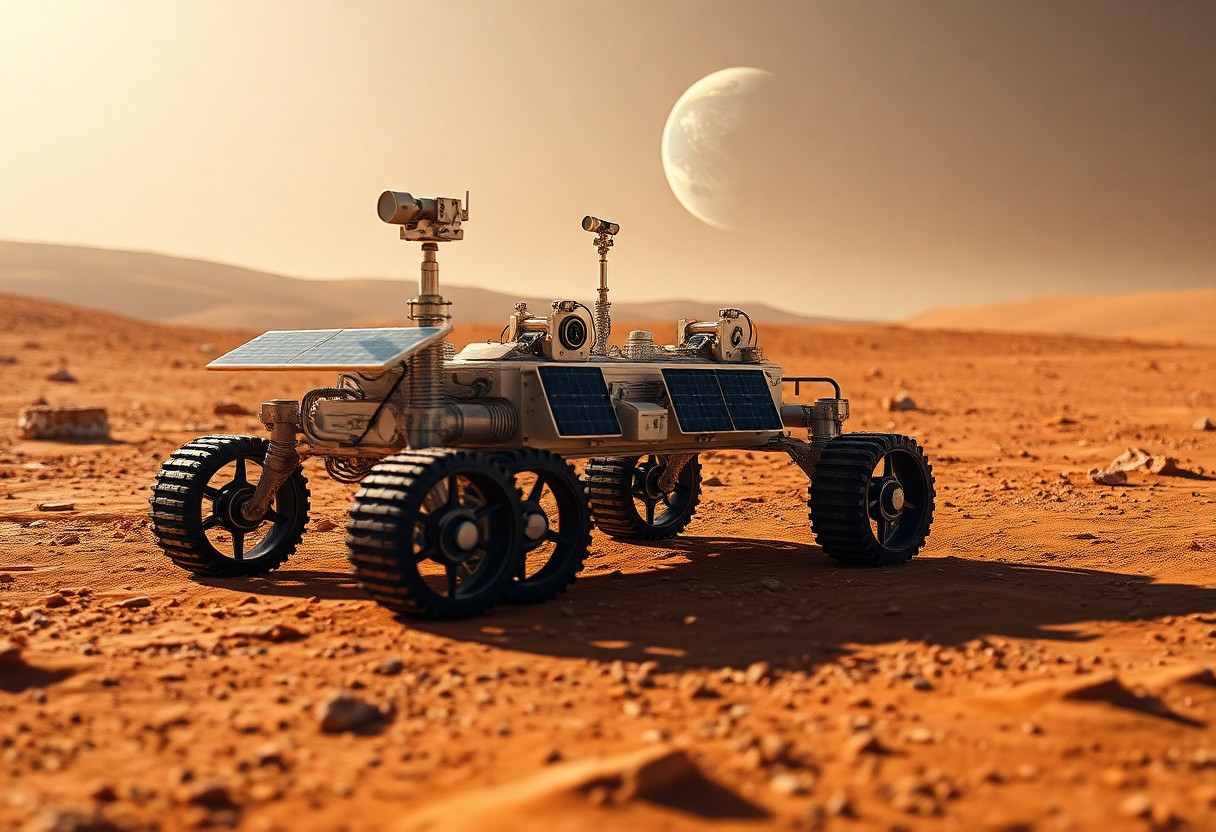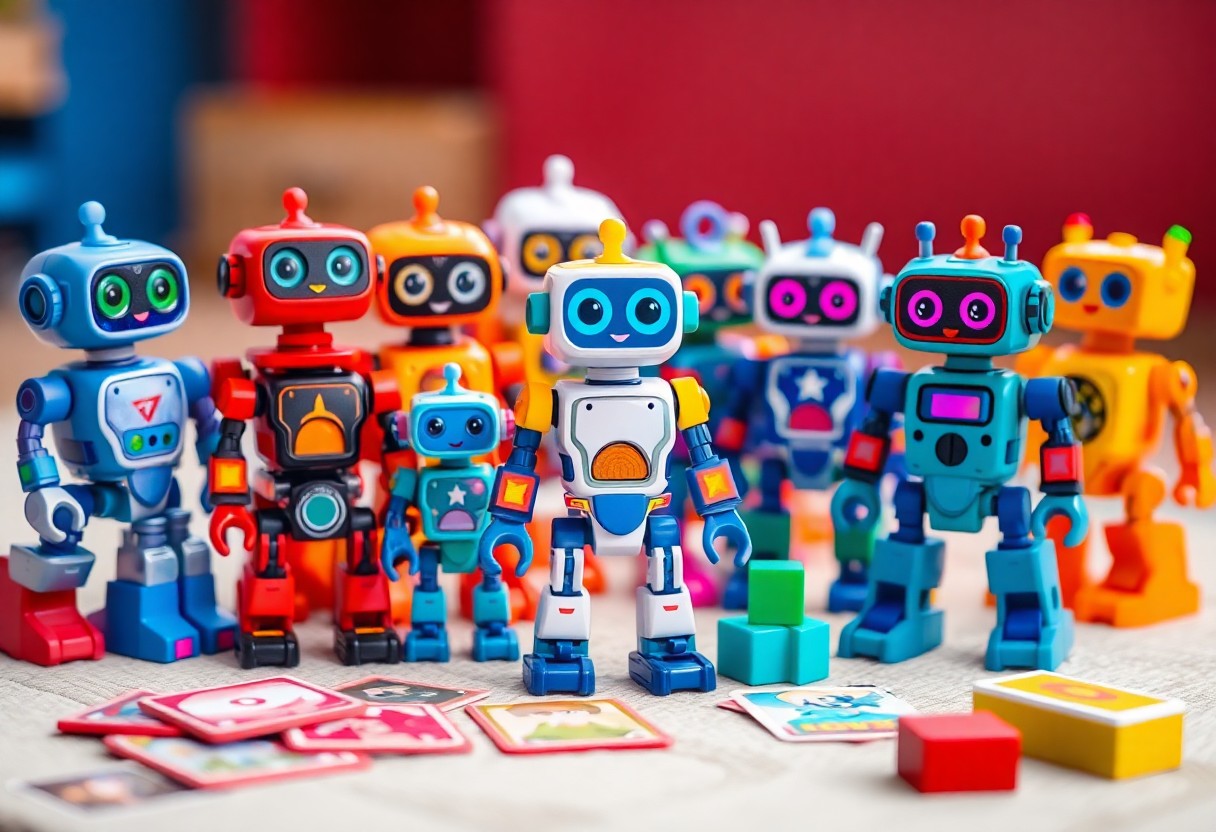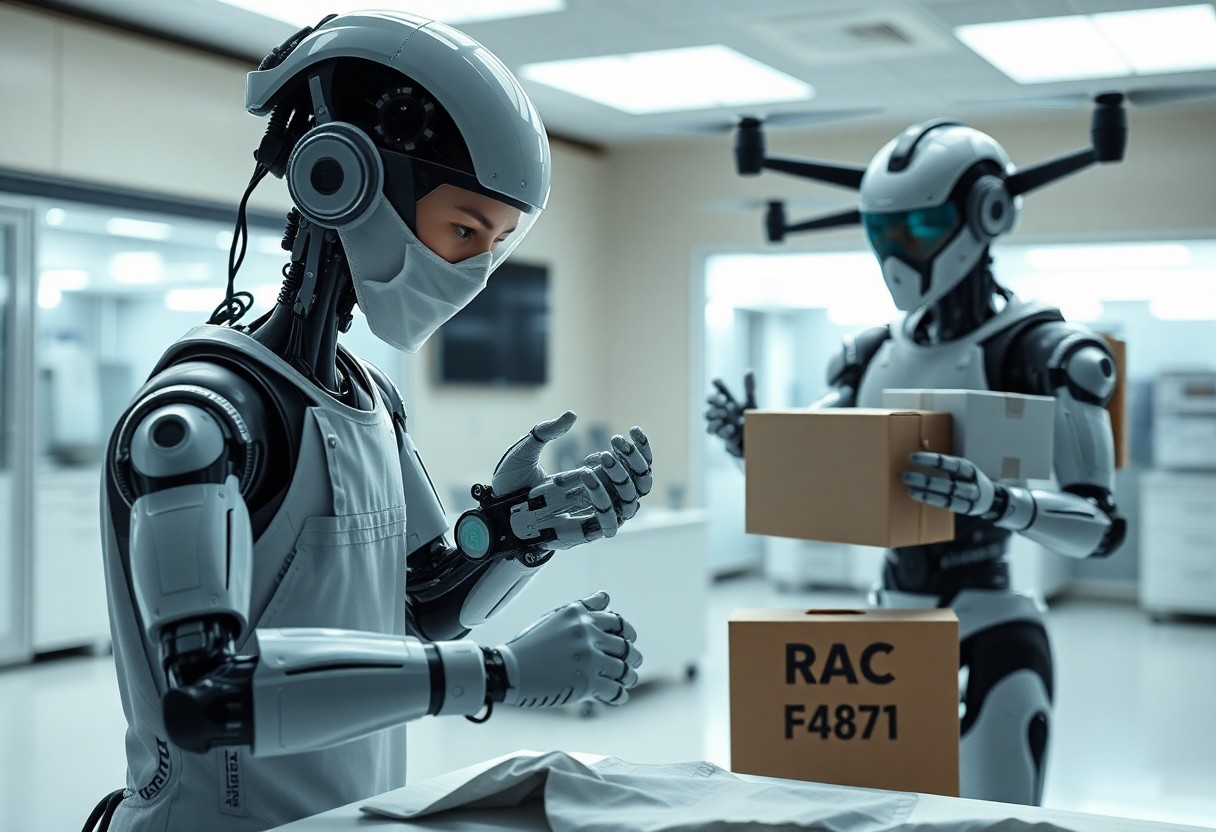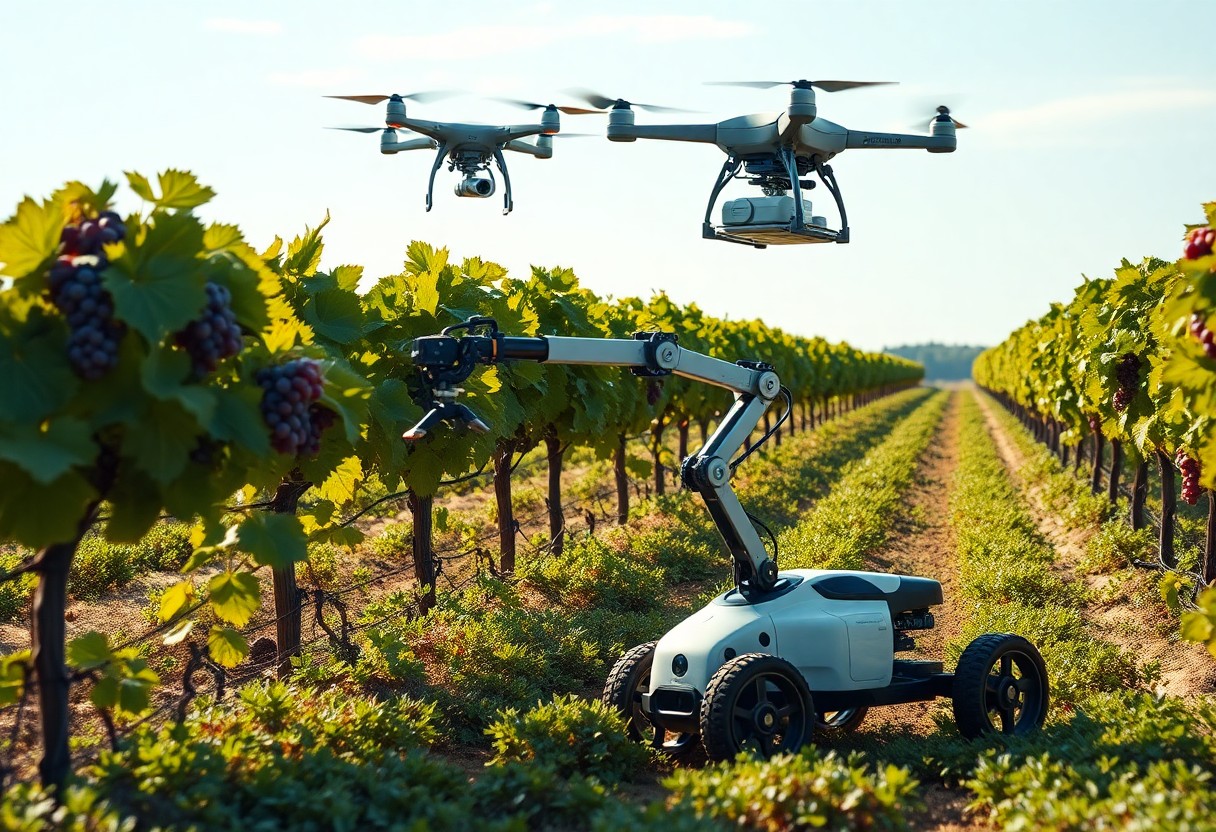Most advancements in space exploration are greatly influenced by robotics, which play a pivotal role in missions beyond Earth. As you investigate into this field, you’ll discover how robotic technology enhances data collection, facilitates astronaut safety, and aids in the construction of off-world habitats. From rovers navigating Martian terrain to autonomous spacecraft conducting deep-space observations, robotics are transforming the way we understand and explore the universe. In this blog post, you’ll explore the significance of robotics and their applications in shaping the future of space missions.
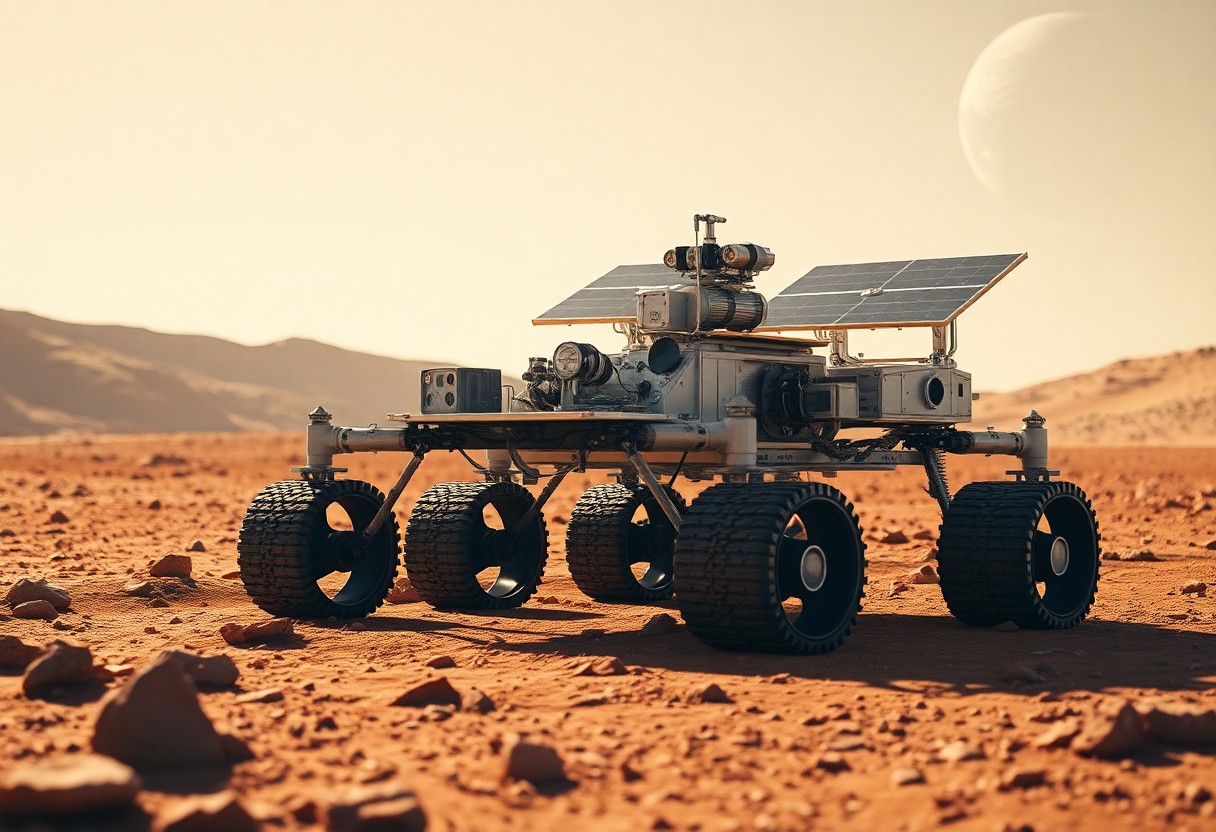
The Role of Robotics in Space Exploration
Robotics significantly enhances your ability to explore and understand extraterrestrial environments. These machines can perform tasks that would be dangerous, difficult, or impossible for humans, allowing for bold missions and discoveries in space. From landers on Mars to robotic arms on the International Space Station, these technologies serve various purposes, such as scientific research, resource gathering, and infrastructure development.
Historical Context
Your journey through robotic technology in space begins with the early missions of the 1960s, such as the Soviet Luna program, which first utilized robotic landers. Progress continued with NASA’s Voyager spacecraft, launched in 1977, that provided vital data about the outer planets. These foundational efforts laid the groundwork for the advanced robotics you see today, establishing the precedent for automation in hostile environments.
Current Applications
Today, robotics are integral to numerous aspects of space exploration, including autonomous rovers like NASA’s Perseverance on Mars. These rovers conduct geological surveys and assess the potential for past life, relaying critical data back to Earth. Additionally, robotic spacecraft like the Mars Reconnaissance Orbiter send high-resolution images and atmospheric data that enhance your understanding of planetary processes.
Current applications extend beyond planetary exploration, involving robotics on the International Space Station, where robotic arms assist astronauts with maintenance tasks and experiments. Drones and small satellites are also utilized for Earth observation, collecting data for climate research. With advancements in artificial intelligence, future robotic missions will likely operate with greater autonomy, reducing the need for human intervention. This evolution supports your exploration ambitions, potentially paving the way for human colonization of other planets.
Types of Robots Used in Space Missions
Various types of robots play key roles in space missions, each designed for unique tasks. These engineered machines include rovers, landers, orbiters, and more, each contributing to the overall objectives of exploration. Understanding these categories enhances your appreciation of how robots are shaping our understanding of the universe.
- Rovers
- Lander
- Orbiters
- Space Probes
- Robotic Arms
Perceiving the landscape and navigating safely on extraterrestrial terrains, rovers like Curiosity and Perseverance have been instrumental in conducting surface exploration and gathering data for scientific research.
Rovers
Rovers are mobile robots designed to roam the surface of planets and moons. They are equipped with various instruments to analyze soil, rocks, and atmosphere. For example, the Mars rover Curiosity has been exploring Mars since 2012, providing valuable insights about the planet’s habitability and geological history.
Lander and Orbiters
Lander and orbiters serve distinct yet interconnected purposes in space exploration. While landers descend to the surface to conduct on-site analyses, orbiters remain in space to gather broader planetary data from above. They work in tandem, with landers transmitting data back to orbiters, which relay it to Earth, facilitating a comprehensive understanding of celestial bodies.
Lander and orbiters often work collaboratively, maximizing the scientific return from missions. For instance, NASA’s Mars Reconnaissance Orbiter assists several landers by providing high-resolution images of potential landing sites, while transiting data collected during the lander’s scientific investigations back to Earth. This synergy not only enhances data collection but also ensures the safety and accuracy of landing missions.
Key Technologies in Space Robotics
The advancement of robotics in space exploration hinges on several key technologies that enable efficiency and resilience in harsh environments. These innovations facilitate autonomous operations, interaction with complex terrains, and collaboration with human crews, thus expanding the potential for scientific research beyond Earth.
Autonomous Navigation Systems
Autonomous Navigation Systems allow robots to traverse and operate in unfamiliar and hostile environments without direct human control. This technology relies on advanced sensors, imaging systems, and algorithms to interpret data and make real-time decisions. Lunar and Mars rovers, for instance, utilize these systems to navigate rocky terrains and avoid obstacles to achieve mission objectives.
Robotic Manipulators
Robotic Manipulators are designed to perform precise tasks such as sampling, assembling, or repairing components in space. These systems closely mimic human dexterity, enabling complex movements that are important for conducting scientific experiments and maintaining spacecraft. Equipped with sophisticated sensors and feedback mechanisms, they ensure accuracy and efficiency in various space missions.
Robotic Manipulators have been employed in numerous significant missions, such as the Canadarm used on the Space Shuttle and the International Space Station. These manipulators can extend and rotate, grasping or releasing objects with an accuracy of millimeters. Notably, they can operate in zero gravity, where traditional human handling methods are ineffective. As space technology evolves, advancements in manipulators are expected to enable more intricate tasks, including assembling structures and conducting maintenance tasks autonomously, thus lessening the burden on astronauts.
Challenges in Space Robotics
Space robotics faces several challenges that can impede operational success. These include harsh environmental conditions and communication delays, both of which can affect the effectiveness and reliability of robotic systems. For a deeper look at examples of how space robots have been employed, check out 9 Examples of Robots in Space.
Harsh Environmental Conditions
Extreme temperatures, radiation, and micrometeorite impacts create a hostile environment for robots. You need to ensure that materials and technologies can withstand conditions far from Earth, including the vacuum of space and surface abrasion on celestial bodies. For example, the Mars rovers are equipped with insulation and protective casings to navigate the planet’s frigid terrain and dust storms.
Communication Delays
Communication delays present a significant hurdle in remote space operations. Signals transmitted between Earth and distant spacecraft can take several minutes to hours to arrive, depending on distance. This lag impacts real-time control, forcing you to rely on autonomous decision-making systems onboard, which must be programmed with intelligence to handle unforeseen situations effectively.
With distances ranging from tens to millions of miles, communication delays can vary significantly. For instance, when rover operators command Curiosity on Mars, they often face delays of approximately 14 minutes for a round trip. This can complicate timely responses to dynamic situations, such as navigating around obstacles or adjusting scientific measures, demanding robust programming and advanced artificial intelligence to ensure success in these complex missions.
Future Trends in Space Robotics
As space exploration progresses, the role of robotics will only increase, paving the way for innovative solutions that enhance your missions. Emerging trends include advanced AI capabilities, autonomous systems, and the deployment of collaborative robots. These advancements promise to revolutionize how you engage with and understand distant celestial bodies.
Advanced AI Integration
Advanced AI integration is transforming the capabilities of space robotics, allowing robots to perform complex tasks independently. These AI systems can analyze vast amounts of data swiftly, make decisions in real-time, and adapt to unforeseen conditions, which is imperative for successful missions. You can expect more intelligent, autonomous systems that enhance exploration efficiency.
- Improved decision-making in unpredictable environments.
- Real-time data analysis for enhanced mission outcomes.
- Adaptive learning capabilities for evolving challenges.
- Increased operational autonomy during long-duration missions.
- Seamless interaction between humans and machines.
| Trend | Description |
|---|---|
| AI-Driven Operations | Utilization of machine learning for faster decision-making. |
| Enhanced Navigation | Autonomous pathfinding in complex terrains. |
| Predictive Maintenance | AI predicting system failures before they occur. |
| Human-Robot Collaboration | AI aiding seamless interaction between crew and robots. |
Collaborative Robots
Collaborative robots, or cobots, are designed to work alongside human astronauts, making space missions more efficient. You will find these robots assisting in various tasks, from assembly to data collection, ensuring that human capabilities are augmented rather than replaced. The synergy between you and these robots can lead to significant productivity gains in challenging environments.
The integration of collaborative robots offers practical solutions for space missions. The International Space Station is already utilizing cobots to assist astronauts with routine tasks, allowing you to focus on critical operations. With advancements in haptic feedback technology, these robots are becoming increasingly adept at handling delicate instruments. This partnership not only streamlines operations but also enhances safety and mission success rates, reflecting a growing trend in space exploration.
Case Studies of Successful Robotic Missions
Numerous robotic missions have expanded our understanding of space, showcasing the capabilities and complexities of robotic technology. These successful missions serve as milestones in exploration and are critical for future endeavors.
- NASA’s Curiosity Rover (Mars, 2012): Analyzed Martian soil and weather, providing evidence that Mars once had conditions suitable for life.
- ESA’s Rosetta Mission (2014): Successfully orbited and landed on comet 67P/Churyumov-Gerasimenko, gathering invaluable data on the origins of the solar system.
- JPL’s Perseverance Rover (Mars, 2021): Equipped with advanced technology to search for signs of ancient life and collect samples for future return to Earth.
- Hubble Space Telescope (1990): Revolutionized astronomy with its ability to provide unprecedented images and data of distant galaxies and celestial phenomena.
- International Space Station Robotics (ongoing): Employs multiple robotic systems for maintenance, construction, and experimentation in microgravity.
Mars Rover Missions
Mars Rover Missions exemplify the integration of robotic technology in exploring the Red Planet. Each rover, from Spirit and Opportunity to Curiosity and Perseverance, has significantly contributed to understanding Martian geology and potential for life. For example, Curiosity discovered complex organic molecules, while Perseverance is actively collecting samples for future analysis on Earth.
International Space Station Robotics
Robotic systems aboard the International Space Station (ISS) enhance operations and scientific research. They perform critical tasks such as maintaining the station, assisting astronauts during extravehicular activities (EVAs), and conducting experiments. The Canadarm2, for instance, plays a vital role in capturing visiting spacecraft and moving large equipment, demonstrating robotics’ effectiveness in microgravity environments.
Advanced robotics on the ISS, including both the Canadarm2 and Dextre, greatly improve mission efficiency and safety. Dextre, the two-armed robot, can carry out delicate tasks outside the ISS, reducing the number of spacewalks required from astronauts. These innovations exemplify how robotic technology is important for sustaining long-term human presence in space and facilitating scientific breakthroughs in challenging environments.
To wrap up
Drawing together the insights on robotics in space exploration, you can see how these technologies enhance your understanding of the cosmos. They not only extend your reach into environments that are inhospitable to humans but also improve the efficiency of missions. As robotics continue to evolve, they will play an even greater role in gathering data, conducting experiments, and paving the way for future human exploration. Your engagement with these advancements opens new frontiers in space science and enhances your experience of the universe.

